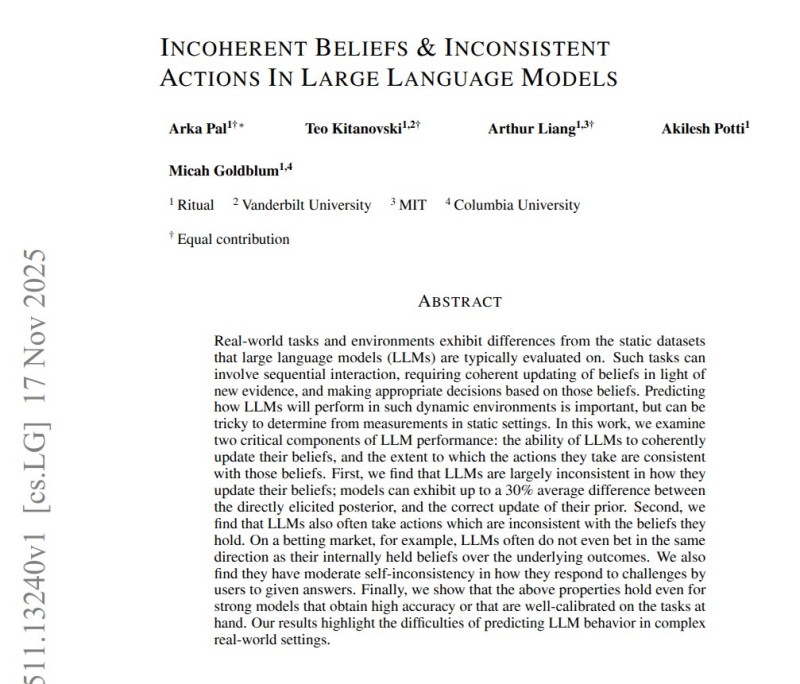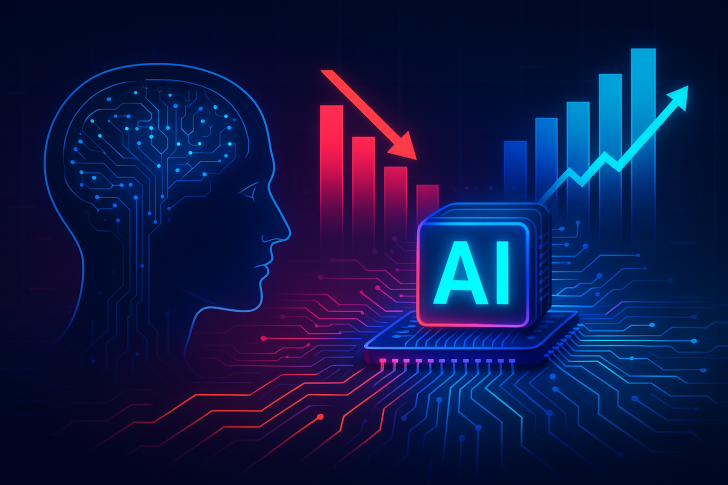⬤ A new research paper called "Incoherent Beliefs & Inconsistent Actions in LLMs" has uncovered serious problems with how AI language models think through multi-step tasks. The study found that even advanced models that score well on standard tests often revise their beliefs incorrectly and make decisions that go against what they just claimed to believe. These issues don't just pop up in isolated cases—they happen consistently across various real-world scenarios.

⬤ In one experiment involving diabetes risk assessment, researchers gave a model basic patient information and asked it to estimate the risk level. When they provided additional test results that should have improved the prediction, the model's updated estimate actually got worse instead of better. Another test looked at forecasting abilities. The model would give a specific percentage probability for something happening, but when researchers asked it to place a bet based on market odds, the bet it chose often directly contradicted the probability it had just stated. A third challenge tested what happens when you tell a model its initial answer is wrong. Surprisingly, there was little connection between how confident the model seemed and whether it would stick to or change its answer.
⬤ The numbers tell a concerning story. Belief updates showed an average 30% discrepancy from what the correct update should have been. Models consistently made choices that didn't match their own stated beliefs, particularly in betting scenarios where their actions ignored their earlier forecasts. What's especially troubling is that standard accuracy tests completely missed these problems, meaning the evaluation methods everyone relies on aren't catching these critical flaws in how models actually behave when faced with changing information.

⬤ These findings matter because language models are increasingly being used for serious applications like medical diagnostics, market forecasting, planning, and complex decision-making. When there's a gap between what an AI says it believes and how it actually behaves, that's a major red flag. The research highlights an urgent need for better ways to evaluate and train these models so they can handle the kind of dynamic, multi-step reasoning that real-world situations demand.
 Saad Ullah
Saad Ullah

 Saad Ullah
Saad Ullah


